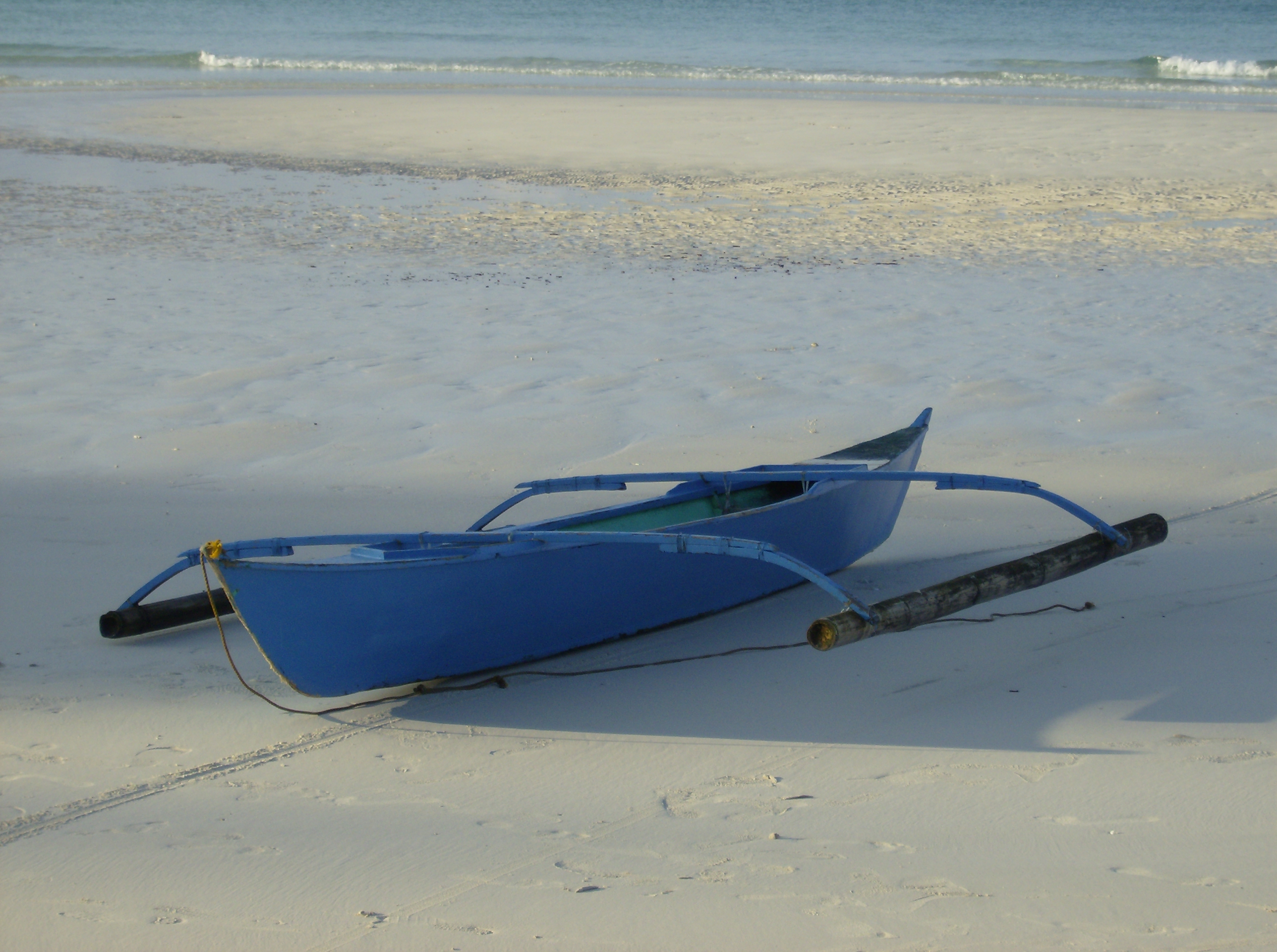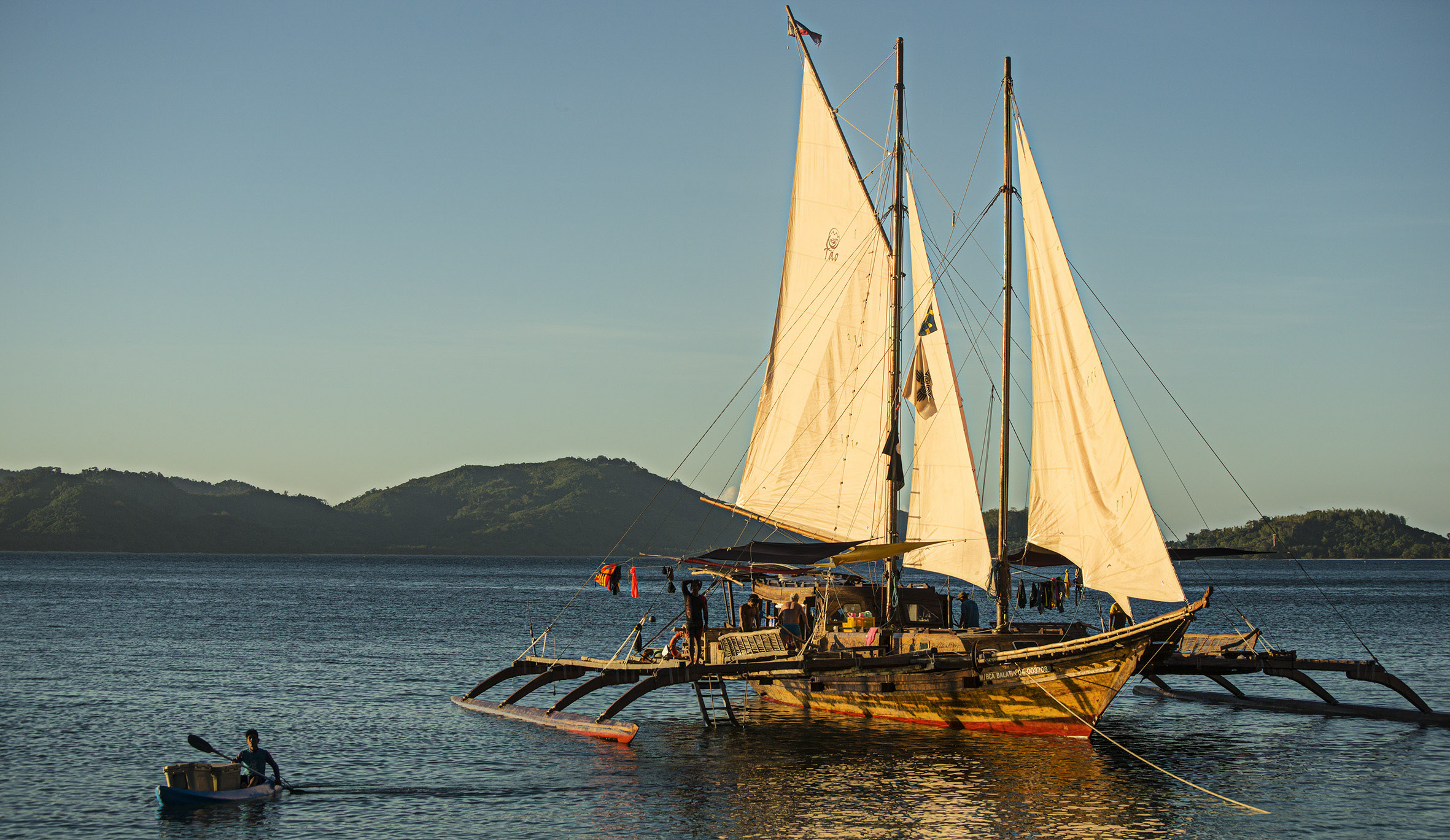|
Guilalo
''Guilalo'' (also spelled ''gilalo'', ''jilalo'', ''bilalo'', or ''guilálas''), were large native sailing outrigger ships of the Tagalog people in the Philippines. They were common vessels in Manila Bay in the 18th and 19th centuries. They were easily identifiable by their two large settee sails made with woven fiber. They were steered by a central rudder and can be rowed with round-bladed oars. They ferried passengers and trade goods (like Daing, dried fish and fruits) between Manila and Cavite. They were also used in the Batangas region. They were also sometimes referred to as ''tafurea'' (or ''tarida'') in Spanish language, Spanish, due to their similarity in appearance to the Middle Ages, Medieval European ''tafurea'', a flat-bottomed sailing ship used to Horse transports in the Middle Ages, transport horses. They are also sometimes known as "''Bangka (boat), panco''", a Spanish general term for ''Bangka (boat), bangka''. File:Modelo de guilalo (Filipinas). Modelo acoplamien ... [...More Info...] [...Related Items...] OR: [Wikipedia] [Google] [Baidu] |
Bangka (boat)
Bangka are various native watercraft of the Philippines. It originally referred to small double-outrigger dugout canoes used in rivers and shallow coastal waters, but since the 18th century, it has expanded to include larger lashed-lug ships, with or without outriggers. Though the term used is the same throughout the Philippines, "bangka" can refer to a very diverse range of boats specific to different regions. Bangka was also spelled as banca, panca, or panga ( m. banco, panco, pango) in Spanish. It is also known archaically as sakayan (also spelled sacayan). Etymology Bangka is derived from Proto-Malayo-Polynesian ''*baŋkaʔ'', with cognates including Kavalan ''bangka'', Mori ''bangka'', and Sumbawa ''bangka''. It is a doublet of two other protoforms referring to boats: Proto-Austronesian ''*qabaŋ'' and Proto-Central-Malayo-Polynesian ''*waŋka''. Ultimately from the Proto-Austronesian lexical root ''*baŋ'' for "boat". History Indigenous Philippine boats origin ... [...More Info...] [...Related Items...] OR: [Wikipedia] [Google] [Baidu] |
Casco (barge)
''Cascos'' are flat-bottomed square-ended barges from the Philippines. They were used mostly to carry cargo along lakes and rivers, and as lighters to transport goods to and from moored ships. Though they resemble the Chinese sampan, they are much larger with two detachable masts with junk rigs made of woven fiber. They also possess outrigger-like platforms along the entire length of the sides, which is used by punters with barge poles when traversing shallow water. They were steered by an oar or a central rudder by a helmsman housed in a small raised platform at the stern. The entire deck is covered almost entirely in removable curving or pitched panels. ''Cascos'' were most prevalent in southern Luzon, particularly along the Pasig River and Laguna de Bay, as well as in the Manila Bay harbor. In the late 18th and early 19th centuries, they were often strung together in a train drawn by a steamship (''vapor''). They were used as transport ships by American troops in Laguna d ... [...More Info...] [...Related Items...] OR: [Wikipedia] [Google] [Baidu] |
Balangay
A Balangay, or barangay is a type of lashed-lug boat built by joining planks edge-to-edge using pins, dowels, and fiber lashings. They are found throughout the Philippines and were used largely as trading ships up until the colonial era. The oldest known balangay are the Butuan boats, which have been carbon-dated to 320 AD and were recovered from several sites in Butuan, Agusan del Norte. Balangay were the first wooden watercraft excavated in Southeast Asia. Balangay are celebrated annually in the Balanghai Festival of Butuan City. Names ''Balangay'' was one of the first native words the Europeans learned in the Philippines. The Venetian chronicler Antonio Pigafetta, who was with Ferdinand Magellan when setting foot in the Philippines in 1521 called the native boats ''balangai'' or ''balanghai''. This word appears as either ''balangay'' or ''barangay'', with the same meaning, in all the major languages of the Philippines. Early colonial Spanish dictionaries make it clear t ... [...More Info...] [...Related Items...] OR: [Wikipedia] [Google] [Baidu] |
Balación
''Balación'', also known as ''Parao'' or ''Balasian'', was a large native sailing outrigger ship of the Tagalog people of Laguna in the Philippines. See also * Armadahan *Casco (barge) *Guilalo ''Guilalo'' (also spelled ''gilalo'', ''jilalo'', ''bilalo'', or ''guilálas''), were large native sailing outrigger ships of the Tagalog people in the Philippines. They were common vessels in Manila Bay in the 18th and 19th centuries. They were ea ... * Salambaw References {{Austronesian ships Indigenous ships of the Philippines ... [...More Info...] [...Related Items...] OR: [Wikipedia] [Google] [Baidu] |
Lepa (ship)
''Lepa'', also known as ''lipa'' or ''lepa-lepa'', are indigenous ships of the Sama-Bajau people in the Philippines and Malaysia. They were traditionally used as houseboats by the seagoing Sama Dilaut. Since most Sama have abandoned exclusive sea-living, modern ''lepa'' are instead used as fishing boats and cargo vessels. ''Lepa'' are medium-sized boats, usually averaging at in length, and around in width; with the hull averaging at in height. ''Lepa'' is also known as ''pidlas'', among land-dwelling Sama. Very large ''lepa'' are known as ''kumpit''. They can reach lengths of and are most often used as trade ships. Family ''lepa'' usually tow smaller daughter ships, like the '' buggoh'' or the '' birau''. ''Lepa'' can also be used as a generic term for "boat" in the various Sama-Bajau groups; the '' vinta'', for example, is also known as ''lepa-lepa''. ''Lepa'' nowadays are increasingly being replaced by motor-powered outrigger canoes, the ''pambot'' ("pump boat"). Descr ... [...More Info...] [...Related Items...] OR: [Wikipedia] [Google] [Baidu] |
Rudder
A rudder is a primary control surface used to steer a ship, boat, submarine, hovercraft, aircraft, or other vehicle that moves through a fluid medium (generally air or water). On an aircraft the rudder is used primarily to counter adverse yaw and p-factor and is not the primary control used to turn the airplane. A rudder operates by redirecting the fluid past the hull or fuselage, thus imparting a turning or yawing motion to the craft. In basic form, a rudder is a flat plane or sheet of material attached with hinges to the craft's stern, tail, or after end. Often rudders are shaped so as to minimize hydrodynamic or aerodynamic drag. On simple watercraft, a tiller—essentially, a stick or pole acting as a lever arm—may be attached to the top of the rudder to allow it to be turned by a helmsman. In larger vessels, cables, pushrods, or hydraulics may be used to link rudders to steering wheels. In typical aircraft, the rudder is operated by pedals via mechanical linkages or hydr ... [...More Info...] [...Related Items...] OR: [Wikipedia] [Google] [Baidu] |
Woodcut
Woodcut is a relief printing technique in printmaking Printmaking is the process of creating artworks by printing, normally on paper, but also on fabric, wood, metal, and other surfaces. "Traditional printmaking" normally covers only the process of creating prints using a hand processed techniq .... An artist carves an image into the surface of a block of wood—typically with Chisel#Gouge, gouges—leaving the printing parts level with the surface while removing the non-printing parts. Areas that the artist cuts away carry no ink, while characters or images at surface level carry the ink to produce the print. The block is cut along the wood grain (unlike wood engraving, where the block is cut in the end-grain). The surface is covered with ink by rolling over the surface with an ink-covered roller (brayer), leaving ink upon the flat surface but not in the non-printing areas. Multiple colors can be printed by keying the paper to a frame around the woodblocks (using a dif ... [...More Info...] [...Related Items...] OR: [Wikipedia] [Google] [Baidu] |
Paraw
Paraw (also spelled ''parao'') are various double Outrigger canoe, outrigger sail boats in the Philippines. It is a general term (similar to the term ''bangka (boat), bangka'') and thus can refer to a range of ship types, from small fishing canoes to large merchant lashed-lug plank boats (''balangay'' or ''baloto'') with two outriggers (''katig'') propelled by sails (usually a large crab-claw sail opposite a smaller triangular foresail) Etymology The word ''paraw'' (also spelled ''parao'') is a cognate of the terms ''proa'' of the Pacific Islands, and ''perahu'' or ''prau'' of Malay Indonesians, Malay-Indonesia. It refers to outrigger boats propelled by sails (''layag''). It is a type of ''bangka (boat), bangka'', the wider term used for boats (with or without outriggers) in the Philippines. Characteristics The paraw has three major elements that make it a paraw: the ''bangka'' (canoe or main hull), the ''katig'' (outriggers), and the ''layag'' (sails). Motorized versions of b ... [...More Info...] [...Related Items...] OR: [Wikipedia] [Google] [Baidu] |
Karakoa
''Karakoa'' were large outrigger warships from the Philippines. They were used by native Filipinos, notably the Kapampangans and the Visayans, during seasonal sea raids. ''Karakoa'' were distinct from other traditional Philippine sailing vessels in that they were equipped with platforms for transporting warriors and for fighting at sea. During peacetime, they were also used as trading ships. Large ''karakoa'', which could carry hundreds of rowers and warriors, were known as ''joangas'' (also spelled '' juangas'') by the Spanish. Panday Piray of Pampanga, Philippines was also known for forging heavy bronze lantaka to be mounted on Lakan's (Naval Chief/Commander) ships called 'caracoas' doing battle against the Spanish invaders and cannons were also commissioned by Rajah Sulayman for the fortification of Maynila. By the end of the 16th century, the Spanish denounced ''karakoa'' ship-building and its usage. It later led to a total ban of the ship and the traditions assigned to it. I ... [...More Info...] [...Related Items...] OR: [Wikipedia] [Google] [Baidu] |
Garay (ship)
''Garay'' were traditional native warships of the Banguingui people in the Philippines. In the 18th and 19th centuries, they were commonly used for piracy by the Banguingui and Iranun people against unarmed trading ships and raids on coastal settlements in the regions surrounding the Sulu Sea. History Most ''garay'' were built in the shipyards of Parang, Sulu in the late 18th century. During the early 19th century, Banguingui ''garay'' squadrons regularly plagued the straits of southern Palawan from the months of March to November each year. They raided coastal areas in northern Borneo for slaves as well as cut off trade into the Sultanate of Brunei. These attacks severely affected the economy of Brunei, leading to its decline. The Banguingui purportedly had a saying: "It is difficult to catch fish, but easy to catch Borneans." Description ''Garay'' were smaller, faster, and more maneuverable than the Iranun '' lanong'' warships. They had a much broader beam and a somewhat r ... [...More Info...] [...Related Items...] OR: [Wikipedia] [Google] [Baidu] |
.png)


.png)
.jpg)


.jpg)

.png)